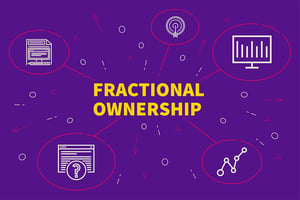The holiday season is closing in, and for e-commerce businesses, this truly is the most wonderful...
The Impact Of Technology On E-Commerce: AI, AR, And Beyond
The world is changing. Fast. The convergence of technology and investment has ushered in a new era of opportunities and challenges. From the transformative capabilities of Artificial Intelligence (AI) to the immersive experiences offered by Augmented Reality (AR), the impact of technology on e-commerce investments is profound and far-reaching. In this article, we discuss the multifaceted ways in which AI, AR, and other cutting-edge technologies are reshaping the e-commerce investment landscape, providing insights into how investors can navigate this rapidly evolving terrain to maximize returns and stay ahead of the curve.
Revolutionizing E-Commerce with Artificial Intelligence
Artificial Intelligence (AI) has revolutionized the e-commerce landscape, transforming the way businesses operate and customers shop. With AI-powered tools and algorithms, online retailers can analyze vast amounts of data to gain valuable insights and make data-driven decisions. According to a survey conducted by Gartner, 37% of organizations have implemented AI in some form of e-commerce applications, and this number is expected to rise in the coming years.
One of the key areas where AI is impacting e-commerce is personalized product recommendations. By analyzing customer behavior and purchase history, AI algorithms can suggest relevant products to individual shoppers, increasing the chances of making a sale. According to a study by Accenture, 91% of consumers are more likely to shop with brands that provide personalized recommendations. This demonstrates the significant impact of AI on improving customer engagement and driving sales.
In addition to personalized recommendations, AI-powered chatbots and virtual assistants are transforming customer service in e-commerce. These intelligent systems can provide instant support and answer customer queries, enhancing the overall shopping experience. According to a report by Juniper Research, chatbots are expected to save businesses $8 billion annually by 2022. This highlights the cost-saving potential of AI in customer service.
AI is also being used to optimize pricing strategies in e-commerce. Dynamic pricing algorithms can analyze market trends, competitor prices, and customer demand to adjust product prices in real-time. This allows businesses to maximize profits and stay competitive in a fast-paced online marketplace. According to a study by Deloitte, dynamic pricing can increase revenue by 2-5% for retailers, showcasing the financial benefits of AI in e-commerce.
Overall, AI is revolutionizing e-commerce by enabling personalized recommendations, improving customer service through chatbots, and optimizing pricing strategies. As businesses continue to invest in AI technologies, the impact on e-commerce investments will only continue to grow.
Enhancing Customer Experience Through Augmented Reality
Augmented Reality (AR) has emerged as a powerful tool for enhancing customer experience in e-commerce. By overlaying digital content onto the real world, AR allows customers to visualize products in a realistic way before making a purchase. This immersive experience not only increases customer engagement but also reduces the likelihood of returns, as customers have a better understanding of the product they are buying.
According to a report by Retail Perceptions, 61% of shoppers prefer to shop at stores that offer AR experiences. This statistic highlights the growing demand for AR in e-commerce and the positive impact it has on customer satisfaction. For example, furniture retailers can use AR to allow customers to virtually place furniture in their homes to see how it would look, while beauty brands can offer virtual makeup try-on experiences.
AR is also being used to bridge the gap between online and offline shopping experiences. Retailers can use AR to create virtual fitting rooms, where customers can try on clothes virtually without visiting a physical store. This not only saves time for customers but also reduces the need for physical inventory, resulting in cost savings for retailers.
It can also be used as a marketing tool to create interactive and engaging advertisements. Brands can develop AR campaigns that allow customers to scan products or billboards to reveal additional content or discounts. This innovative approach to advertising captures customers' attention and increases brand awareness.
AR is truly revolutionizing the customer experience in e-commerce by allowing customers to visualize products, bridging the gap between online and offline shopping, and creating interactive marketing campaigns. As AR technology continues to advance, its impact on e-commerce investments is expected to grow.
Personalization and Targeted Marketing Strategies
Personalization has become a key strategy for e-commerce businesses to drive customer engagement and increase conversion rates. By leveraging technology, businesses can collect and analyze customer data to deliver personalized experiences and targeted marketing campaigns.
According to a report by Segment, 71% of consumers express frustration when their shopping experience is impersonal. On the other hand, 44% are more likely to become repeat buyers after a personalized shopping experience. These statistics highlight the importance of personalization in e-commerce and its impact on customer loyalty.
One way to personalize the shopping experience is through targeted product recommendations. By analyzing customer behavior and purchase history, e-commerce platforms can suggest relevant products to individual shoppers, increasing the likelihood of making a sale. According to a study by Barilliance, personalized product recommendations can increase conversion rates by 915%.
A key aspect of personalization is customized marketing campaigns. By segmenting customers based on their preferences and purchase history, businesses can tailor marketing messages to specific target audiences. This increases the effectiveness of marketing campaigns and improves overall customer engagement. According to a survey by Epsilon, 80% of consumers are more likely to make a purchase when brands offer personalized experiences.
To sum up, personalization plays a crucial role in e-commerce by driving customer loyalty, increasing conversion rates, and improving overall customer engagement. As technology continues to advance, businesses have more opportunities to leverage personalization to enhance their e-commerce investments.
Security and Fraud Prevention in E-Commerce
As e-commerce continues to grow, ensuring the security of online transactions and preventing fraud has become a top priority for businesses and customers alike. Technology plays a vital role in enhancing security measures and protecting sensitive customer information.
According to a report by CyberSource, online fraud attempts have increased by 33% in the past year. This alarming statistic highlights the need for robust security measures in e-commerce. One of the technologies that are being used to combat fraud is Artificial Intelligence (AI). AI algorithms can analyze large amounts of data to detect patterns and anomalies that indicate fraudulent activities. By using AI-powered fraud detection systems, businesses can minimize the risk of fraudulent transactions and protect their customers.
One technology that is being widely adopted in e-commerce is blockchain. Blockchain is a decentralized and transparent ledger that records all transactions, making it extremely difficult for hackers to alter or manipulate the data. By implementing blockchain technology, businesses can ensure the integrity of their transactions and build trust with their customers.
Biometric authentication is gaining popularity in e-commerce for its enhanced security features. Technologies such as fingerprint scanning and facial recognition provide an extra layer of protection by verifying the identity of customers during the checkout process. According to a study by Mastercard, 93% of consumers prefer using biometric authentication methods over traditional passwords.
In conclusion, technology plays a crucial role in enhancing security measures and preventing fraud in e-commerce. By leveraging AI, blockchain, and biometric authentication, businesses can protect their customers' sensitive information and build trust in the online shopping experience.
Logistics and Supply Chain Innovations
Efficient logistics and supply chain management are essential for the success of e-commerce businesses. Technology has revolutionized this aspect of e-commerce, enabling faster and more cost-effective operations.
One of the key innovations in logistics is the use of automation and robotics. Automated warehouses and fulfillment centers can process orders at a much faster rate, reducing the time it takes to deliver products to customers. According to a report by McKinsey, automation can increase productivity in warehouses by up to 30%, resulting in significant cost savings for businesses.
Furthermore, technologies such as Internet of Things (IoT) and real-time tracking systems have improved visibility and transparency in the supply chain. With IoT sensors and devices, businesses can track the location and condition of products throughout the entire supply chain, ensuring timely delivery and reducing the risk of lost or damaged goods. According to a study by DHL, 70% of businesses have improved their supply chain visibility by implementing IoT technologies.
An interesting area of innovation is last-mile delivery. With the rise of e-commerce, the demand for faster and more convenient delivery options has increased. Technologies such as drones and autonomous vehicles are being explored as potential solutions for last-mile delivery. According to a report by PwC, drone delivery could reduce delivery costs by up to 80%.
This technology has revolutionized logistics and supply chain management in e-commerce, enabling faster and more cost-effective operations. By leveraging automation, IoT, and innovative delivery solutions, businesses can streamline their supply chain processes and enhance the overall customer experience.
The Rise of Voice Commerce and Virtual Assistants
Voice commerce, also known as v-commerce, has gained significant traction in recent years, thanks to advancements in voice recognition technology and virtual assistants such as Amazon's Alexa and Google Assistant. This emerging trend is reshaping the way customers interact with e-commerce platforms and make purchases.
According to a survey by OC&C Strategy Consultants, voice commerce is projected to reach $40 billion in the United States by 2022. This exponential growth is driven by the convenience and ease of use offered by virtual assistants. Customers can simply use their voice to search for products, place orders, and make payments, eliminating the need for manual input.
Furthermore, virtual assistants can provide personalized recommendations based on customer preferences and purchase history, enhancing the overall shopping experience. According to a study by Capgemini, 51% of consumers are interested in using virtual assistants for personalized shopping experiences.
Voice commerce also has the potential to revolutionize customer service in e-commerce. Virtual assistants can provide instant support and answer customer queries, improving response times and customer satisfaction. According to a report by Juniper Research, virtual assistants are expected to handle 85% of customer interactions by 2020.
The rise of voice commerce and virtual assistants is transforming the way customers interact with e-commerce platforms. As technology continues to advance, voice commerce is expected to become an integral part of the e-commerce landscape, driving further investments in this field.
Mobile Commerce Trends and Opportunities
With the increasing popularity of smartphones and mobile devices, mobile commerce, or m-commerce, has become a significant driver of e-commerce growth. Mobile technology offers unique opportunities for businesses to reach customers anytime, anywhere.
According to a report by Statista, mobile e-commerce sales are projected to reach $3.56 trillion by 2021, accounting for 72.9% of total e-commerce sales. This statistic highlights the importance of mobile commerce in the e-commerce industry.
One of the key trends in mobile commerce is the rise of mobile payment solutions. Services such as Apple Pay, Google Pay, and Samsung Pay have made it easier for customers to make secure and convenient payments using their mobile devices. According to a report by PYMNTS, mobile wallets are expected to reach 4.4 billion users by 2023.
Another trend is the increasing use of mobile apps for e-commerce. Mobile apps offer a more personalized and seamless shopping experience, allowing customers to easily browse products, make purchases, and track orders. According to a study by Criteo, mobile apps generate 3 times more conversions than mobile websites.
Furthermore, mobile commerce opens up new opportunities for location-based marketing. By leveraging GPS technology, businesses can send targeted promotions and discounts to customers when they are in close proximity to their stores. According to a survey by Swirl Networks, 77% of consumers are more likely to visit a store if they receive personalized offers on their mobile devices.
Mobile commerce is a rapidly growing segment of e-commerce, offering unique opportunities for businesses to reach customers on-the-go. By embracing mobile payment solutions, developing mobile apps, and leveraging location-based marketing, businesses can tap into the potential of mobile commerce and drive further investments in this field.
Future Outlook: Integrating Emerging Technologies
The future of e-commerce is filled with exciting possibilities as emerging technologies continue to evolve and shape the industry. From virtual reality to blockchain, these technologies have the potential to revolutionize the online retail experience.
One of the emerging technologies that hold promise for e-commerce is virtual reality (VR). VR can create immersive shopping experiences, allowing customers to virtually explore products and make informed purchasing decisions. According to a report by Goldman Sachs, the VR retail market is projected to reach $1.6 billion by 2025.
Blockchain technology is another emerging trend that has the potential to transform e-commerce. By providing a secure and transparent platform for transactions, blockchain can enhance trust and reduce the risk of fraud. Additionally, blockchain-based smart contracts can automate and streamline the payment process, resulting in faster and more efficient transactions.
Artificial Intelligence (AI) is also expected to play a significant role in the future of e-commerce. AI-powered chatbots and virtual assistants will continue to improve customer service, while AI algorithms will become even more advanced in providing personalized recommendations and optimizing pricing strategies.
Furthermore, the Internet of Things (IoT) is expected to continue expanding its presence in e-commerce. With IoT devices becoming increasingly interconnected, businesses can gather more data about customer preferences and behavior, allowing for more personalized experiences.
In conclusion, the future of e-commerce is bright, with emerging technologies such as virtual reality, blockchain, AI, and IoT shaping the industry. As businesses continue to invest in these technologies, the impact on e-commerce investments will be profound.


